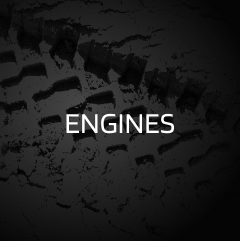 CCA Spares
CCA Spares
The Crankshaft: Engine’s Rotating Powerhouse
In the intricate ballet of an internal combustion engine, the crankshaft takes center stage as the rotating powerhouse that transforms the linear motion of pistons into a rotational force. Let’s delve into the world of crankshafts and uncover their pivotal role in the mechanical symphony of an engine.
Anatomy of a Crankshaft:
A crankshaft is a robust and precisely engineered component typically made of hardened steel. Its design features a series of offset crankpins and throws that connect to the connecting rods attached to the pistons. Explore the intricacies of crankshaft design, including counterweights that balance the forces generated by the pistons, promoting smooth rotation.
Converting Linear to Rotational Motion:
As pistons move up and down inside the cylinders, the crankshaft converts this linear motion into the rotational force that drives the engine. Uncover the mechanics of the crankshaft’s operation during the four-stroke cycle, understanding how the offset throws play a crucial role in maintaining continuous rotation.
Balancer Shafts and Engine Balance:
Engine balance is paramount for smooth operation and longevity. Discover how balancer shafts, often integrated into the crankshaft assembly, counteract vibrations caused by the reciprocating motion of pistons. Delve into the engineering considerations behind achieving optimal balance for various engine configurations.
Crankshaft Materials and Manufacturing:
The materials used in crankshaft construction play a vital role in ensuring durability and performance. Explore the different materials employed, from cast iron to forged steel, and understand the manufacturing processes that contribute to creating a crankshaft capable of withstanding the rigors of engine operation.
Performance Considerations:
The design of the crankshaft influences not only the engine’s reliability but also its performance characteristics. Examine how factors such as stroke length, journal size, and crankshaft weight contribute to the engine’s torque, horsepower, and overall responsiveness.
Innovation in Motion:
The evolution of crankshaft technology continues to be a focal point of innovation in the automotive industry. Explore advancements such as lightweight materials, precision machining techniques, and even integrated electric motors that contribute to enhanced efficiency and performance.
In conclusion, the crankshaft stands as a testament to the ingenuity of automotive engineering. This article has provided a comprehensive overview of its role as the engine’s rotating powerhouse, converting the linear motion of pistons into the rotational force that propels vehicles forward. Stay tuned for the next installment as we continue our journey through the intricate components of internal combustion engines.

